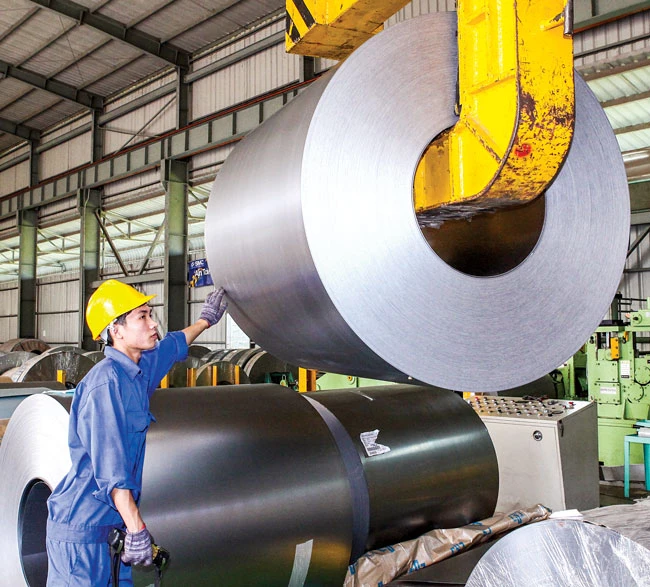
However, this is a disturbing trend that is hindering international trade activities and the important process of economic integration, also resulting in international investments being seriously affected.
Trade protection is increasing
Vietnam has signed, enforced and is currently negotiating seventeen more free trade agreements (FTAs), in which ten FTAs have been signed and enforced, two FTAs have been signed and yet to be put into effect, two FTAs have just wound up negotiations while three more are currently under negotiations. Vietnam's openness in welcoming FTAs is very high, especially two new generation FTAs such as the Comprehensive and Progressive Agreement for Trans-Pacific Partnership (CPTPP) and Vietnam-EU FTA (EVFTA).
FTAs within ASEAN have committed to cut 98% of tariff, with CPTPP cutting 100% of tariff and EVFTA around 99%. Vice versa, other countries as well have a high openness towards Vietnam in FTAs. Many key export sectors such as textiles, footwear, seafood, tea, and coffee are expected to completely eliminate tariffs within seven years, same as in EVFTA. With CPTPP, some member countries have pledged to completely eliminate tariffs for Vietnam after four years of implementation after signing of agreement.
In the process of opening and integrating the economy, Vietnam has been a success story. However, in recent years, the trend towards protectionism has become increasingly clear, and in some cases it has become a trade war between entities. This is proving to be an obstacle in import-export activities and integration of Vietnam’s economy.
These days’ commercial insurance is carried out in very many relatively diverse forms. Many methods are being applied such as the direct method of raising taxes, imposing anti-subsidy duties, anti-dumping duties, retaliatory tariffs, non-tariff measures such as import quotas, regulations on administrative procedures or technical barriers, and in some cases changes in monetary values, all of which affect the flow of international trade. In addition to technical barriers and changes in monetary values, there are currently three forms of commercial insurance being applied, namely, anti-dumping tax, anti-subsidy tax, and safeguard tariff (retaliatory tariff).
It is a fact that in recent years, Vietnam has been continuously subjected to anti-price taxes on some items such as steel, catfish and shrimp in big potential markets such as the US, Canada, India, EU countries and many partners that signed FTAs with our country. According to statistics of the Trade Remedies Authority of Vietnam in the Ministry of Industry and Trade, there were only thirteen lawsuits on trade remedies in 2017, but by October 2018 this number had increased to sixteen cases. In addition, many Vietnamese exports are subjected to investigation of trade remedies such as on seafood (1%), tyres (2%), footwear (6%), fibers (9%) and 50% on many other products.
In the last few years, countries have been inclined to use anti-dumping measures, which now account for 70% of all tax cases related to trade remedies. Some countries, which are long-term partners of Vietnam, have also shown signs of abuse of trade remedies to over-protect their domestic manufacturing industry, thereby directly affecting import-export activities of enterprises in Vietnam.
Understand basics of trade law
Vietnam has developed quite a complete legal framework to implement a law on trade remedies in accordance with WTO regulations. However, most Vietnamese businesses still do not fully understand all the regulations to protect their legitimate rights and interests. Therefore, in the event of an international lawsuit, an enterprise will struggle to find ways to tackle it, or even lose the market under weight of high taxation and may not even compete.
Hence, parallel with the integration process for exports, Vietnamese enterprises should be well-versed in the necessary knowledge and regulations on trade remedies. At the same time, businesses must regularly update information so as to respond promptly to related lawsuits right from the very start, when investigating authorities of importing countries send such lawsuits.
In fact, over the last few years, Vietnam has gradually diversified in many import and export markets, but not as much as it could have. With an active participation in CPTPP, it is time for Vietnamese enterprises to meet the highest standards of production required for export of goods, achieve high efficiency in business standards, join production networks, both regional and national distribution networks, and participate in the global value chain.
In recent years, several enterprises, especially SMEs, have imported too much volume of intermediary goods from China to produce domestic consumer goods for export. However, the added value of these goods produced by such businesses is not high enough because in order to enjoy tariffs and non-tariff preferences, the goods must originate from CPTPP, where China is still not a participant. The development of support industries to grow the economy has thus become more urgent. This is very important and decisive for Vietnam to reduce trade deficit in import and export with China, which is a traditional market.




















